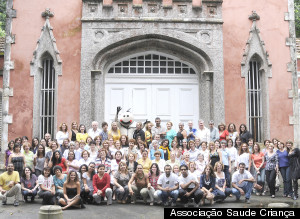
In a "tremendous victory for religious education," a South Carolina court has ruled that students may receive credit for taking religious courses that meet secular standards, USA Today reports.
A three-judge panel of the 4th Circuit U.S. Court of Appeals has approved a 2006 South Carolina law permitting schools to give credit for "Release Time" courses, ending years of courtroom battle between Spartanburg Dictrict 7 and the Freedom from Religion Foundation.
In 2009, the FFRF filed the suit against Spartanburg Distict 7 on behalf of Spartanburg High School student Melissa Moss and her parents, Robert Moss and Ellen Tillett.
"It's almost outrageous that someone could get academic credit for religious indoctrination during Released Time instruction," said Anne Laurie Gaylor, co-founder of FFRF, in USA Today . "I don't think that most people in South Carolina would think that makes sense."
The court ruled that students may receive credit for Released Time courses -- which allow students to receive religious instruction even if they are enrolled in public schools -- just as students may receive credit for courses previously taken at other schools.
Spartanburg High School did not actively encourage students to take Bible courses, according to court documents.
The FFRF will appeal the decision, according to a release.
Around the country, similar tensions are brewing over the proper place of religion in schools.
In a recent settlement, Narrows Public High School in Virginia decided to take down a framed display of the Ten Commandments from its hallways and replace it with a textbook page depicting the Commandments under the heading "Roots of Democracy."
The settlement ended years of courtroom drama that started after theACLU filed a lawsuit against the school, arguing that displaying the Ten Commandments in a public school violated the separation of church and state.
The school board voted to replace the display with the less explicit textbook page. The page references other sources of democratic inspiration, such as the Magna Carta and ancient Athens.
In late May, Mississippi Gov. Phil Bryant advocated for nondenominational school prayer, provoking criticism that he was blurring the lines between church and state.
"I don't think it hurt us at all," the Republican Methodist governor told about 300 high school students at the American Legion Boys State last Tuesday. "I think it built our character, and I think it is what we should continue to do."
Bryant assured listeners that he would not pursue legal action to instate prayer in schools, but expressed hope that one day school prayer would be common, according to the Associated Press.













